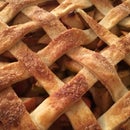Introduction: DIY Solar Eclipse Viewers
During the last two solar eclipses, I tried out two different ways of observing and then photographing the eclipse. One is simple, one is less simple.
On the simple side, a simple pinhole. It's quick and you can do it from anywhere provided the visibility is good.
On the less simple side, purchasing a sheet of solar filter paper will provide enough material to make several observing devices which I will explain more in the following steps.
Alternatively, welding masks work here too. Just be careful that you don't observe it with the naked eye or look through a lens directly at the eclipse!
Step 1: Pinhole (Simple Version)
This is quick and easy to do from just about anywhere a solar eclipse is visible. Since you can't look directly at a solar eclipse, you can observe the process by making a small pinhole in a piece of paper or card and allowing the light to project onto a surface (laundry room walls and foreheads work great from personal experience!)
You can see the size of the crescent changing throughout the eclipse. Pretty neat!
Step 2: Solar 'Glasses'
Using a special filter sheet, I decided to make two pairs of glasses and two covers for my dSLR cameras. I didn't use this exact filter sheet - I went to the nearby telescope shop (yes, oddly, my neighborhood does have a telescope shop as I've discovered) and as soon as I uttered 'solar eclip-' the woman at the counter interrupted me and thrust an expensive but incredibly useful sheet of this magically stuff into my hands. We're off!
I whipped up a quick outline of these glasses in Illustrator and laser cut some glasses. If you don't have access to a laser cutter, try re-purposing a pair of 3D glasses and swap out the colored lens paper with this magic paper. Test it out by looking into some bright lights :-)
Step 3: Telephoto Lens Solar Cover - Tube
Find a cardboard tube that gently fits over the barrel of your telephoto lens.
Next, trace a line around the tube where you wish to make your cut. This should be just slightly beyond the end of the surface lens. Using a craft knife, score along your line and continue until you finish the cut. This should be a nice, level cut.
Find a scrap of acrylic to make sure the filter sheet that will be protected. This will be useful in the next step.
Step 4: Construct the Solar Filter Sheet Holder
Once you have the diameter of the tube, you can use this to calculate the diameter of the circle for the filter paper.
Cut a top and bottom (identical), two spacers the same thickness as half your acrylic scrap, and cut the scrap to the rectangular space in between the spacers (again, two identical), and carefully cut the filter paper to fit the rectangular space with acrylic.
Next, sandwich the pieces as follows:
1. Square bottom with circle cut out
2. Hot glue spaces on both sides of the bottom square
3. Lay down the first acrylic scrap
4. Carefully lay down the filter paper
5. Add the other acrylic scrap on top (these layers should now be flush)
6. Glue on the top square with the bottom cut out
I had a roll of tape that was the same width as the thickness of my 'sandwich'. As the cut circle was fitted for the cardboard tube, it was an easy friction fit into the 'sandwich' and the acrylic protected the filter paper from being scratched or torn.
Step 5: Solar Filter Binoculars
Same as for the glasses, although my binoculars didn't leave much space for a cover over the top. I decided to gently wrap around the sides here and use the same blue painters tape to secure them. This isn't as easily removed, but it's a smaller scrap of filter paper being sacrificed so I was okay with it.
Step 6: Observing and Photographing the Eclipse
My trust sky app showed that we were in the right place for observing the eclipse, but as most of the rest of the UK can attest, it ended up being pretty overcast that day and the only sun I saw was on a gate in Regent's Park in London.
I've attached a guide I found for shooting the solar eclipse if you are lucky enough to be in the right place for one and can make good use of it. Better to be prepared, right? If you've had the good fortune of being in the right place at the right time before, please share other resources for observing and photographing eclipses in the comments below.
This was a fun exercise and now I'm prepared for the next solar eclipse. Hope I get to test out my gear soon!
There are other ways of observing a solar eclipse safely. Any other favorites of yours?




![Raised Bed Garden [for Those With Only Hand Tools!]](https://content.instructables.com/F2Q/UUXE/JUQSKGLC/F2QUUXEJUQSKGLC.jpg?auto=webp&crop=1%3A1&frame=1&width=130)